
Roots
Have you ever held a single strand of hair, perhaps after a gentle wash, and noticed how it seems to come alive, changing its very disposition? This quiet transformation, often observed but seldom truly pondered, whispers of profound occurrences within its delicate architecture. Beneath the surface, within each hair strand, a world of molecular interaction choreographs the daily dance of our coils, curls, and waves.
To truly appreciate the magnificent responsiveness of textured hair, we must first look to its very foundations, to the elemental building blocks that grant it both its resilience and its remarkable flexibility. Our exploration begins at the microscopic level, delving into the very heart of hair’s structure, where hydrogen bonds play a leading role in this intricate performance.

Hair Anatomy and Its Inner Architecture
Hair, a remarkable proteinaceous fiber, appears deceptively simple to the unaided eye. Yet, a cross-section reveals a sophisticated, layered construction, a testament to nature’s engineering. The outermost layer, the Cuticle, consists of overlapping, scale-like cells, much like shingles on a roof. These cells, typically six to eight layers deep in human hair, act as the first line of defense, guarding the inner core.
Beneath this protective shield lies the Cortex, the primary determinant of hair’s mechanical properties, its strength, elasticity, and shape. The cortex itself is a complex arrangement of elongated cells, packed tightly with keratin proteins. At the very center of some hair types, a soft, sometimes discontinuous core called the Medulla may reside, though its precise function is still a subject of scientific curiosity.
The cortex is where the action truly unfolds, a dense matrix of macrofibrils, which are bundles of microfibrils. These microfibrils, in turn, are composed of intermediate filaments, long, rope-like structures made of keratin proteins. It is within these keratin proteins that the hydrogen bonds reside, acting as invisible, yet potent, molecular fasteners. These bonds, formed between a hydrogen atom on one molecule and an electronegative atom (like oxygen or nitrogen) on another, are individually weak but collectively exert considerable influence over the hair’s overall form.
The hidden world within each hair strand reveals a complex, layered structure, where countless hydrogen bonds silently dictate its daily responsiveness to the environment.

The Language of Hair’s Structure
Understanding hair’s behavior requires a vocabulary that honors its complexity. We speak of Alpha-Keratin, the predominant protein type in human hair, characterized by its helical conformation. This helical shape is maintained largely by the internal hydrogen bonds, which hold the protein chain in its coiled configuration. When moisture enters the hair, these bonds become a focal point of change.
Beyond hydrogen bonds, other chemical linkages contribute to hair’s stability. Disulfide Bonds, strong covalent connections formed between sulfur atoms in cysteine amino acids, provide permanent structural integrity. These are the bonds broken and reformed in chemical processes like perming or relaxing.
Ionic bonds, formed between oppositely charged amino acid side chains, also play a part, though they are more sensitive to pH changes. However, it is the hydrogen bonds, with their dynamic nature, that allow hair to temporarily alter its shape and texture in response to environmental cues, particularly moisture.
Consider the terminology of hair shape ❉
- Straight Hair ❉ Exhibits a generally circular cross-section and a relatively uniform distribution of cortical cells.
- Wavy Hair ❉ Displays an oval cross-section, leading to gentle bends.
- Curly Hair ❉ Often has a more flattened, elliptical cross-section, contributing to its distinct spiral shape.
- Coily Hair ❉ Possesses a highly flattened, ribbon-like cross-section, forming tight, often zig-zagging patterns.
These macroscopic shapes are intrinsically linked to the microscopic arrangement and behavior of the keratin proteins and their hydrogen bonds within the cortex.
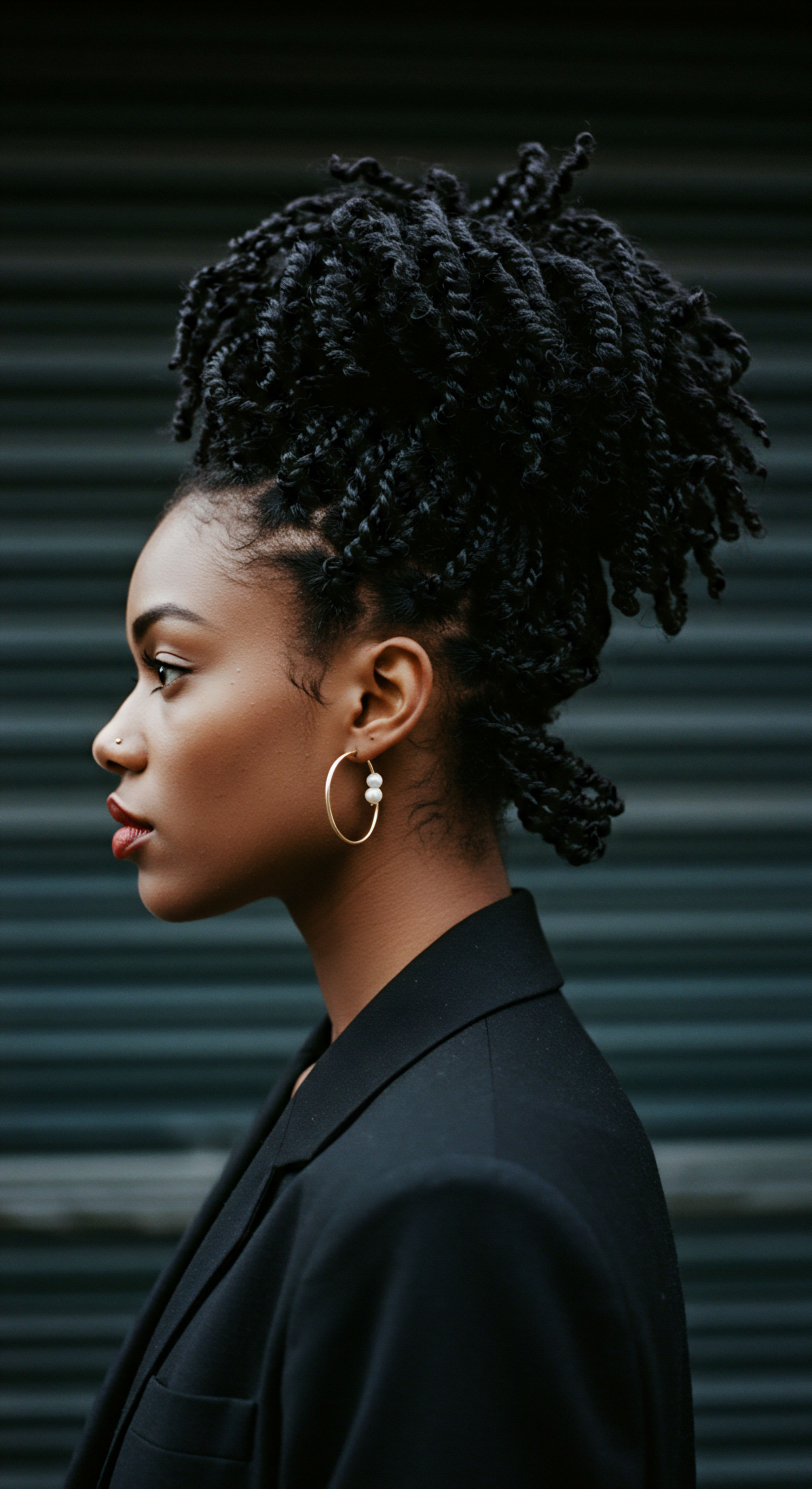
Water’s Quiet Arrival and Hydrogen Bond Response
When moisture, in the form of humidity or direct water contact, encounters hair, it does not simply sit on the surface. Hair is a Hygroscopic Material, meaning it readily absorbs water from its surroundings. This absorption happens with remarkable speed; hair can absorb 75% of its maximum water content within four minutes. As water molecules penetrate the hair fiber, they begin to interact with the keratin proteins.
The water molecules, with their inherent polarity, are drawn to the polar regions of the keratin proteins. Here, they insert themselves between the existing hydrogen bonds that hold the alpha-helical structures of the keratin together. This act of insertion is not a violent rupture, but rather a gentle displacement. The water molecules form new hydrogen bonds with the keratin proteins, effectively competing with and replacing the hydrogen bonds that previously existed between the keratin chains themselves.
This exchange of partners leads to a temporary loosening of the hair’s internal structure. The alpha-helices, no longer rigidly held in their original configuration by the internal protein-to-protein hydrogen bonds, become more flexible. This increased flexibility is what allows hair to be styled and reshaped when wet.
As the hair dries, the water molecules evaporate, and the keratin proteins are once again free to reform hydrogen bonds. However, they now reform in their new, temporarily set positions, holding the hair in its altered shape until moisture reintroduces the cycle.

Ritual
With the foundational understanding of hair’s internal workings now gently settled, our conversation naturally turns to the daily and periodic practices that shape our hair’s experience. How do we, with our hands and our chosen elixirs, engage with this molecular dance of hydrogen bonds? The ritual of hair care, whether a quick spritz or a deeply considered routine, is not merely about aesthetic outcome; it is a direct interaction with the very responsiveness of our strands. This section explores the interplay between scientific principles and the tangible actions we take, providing practical wisdom for nurturing textured hair through its dynamic relationship with moisture.
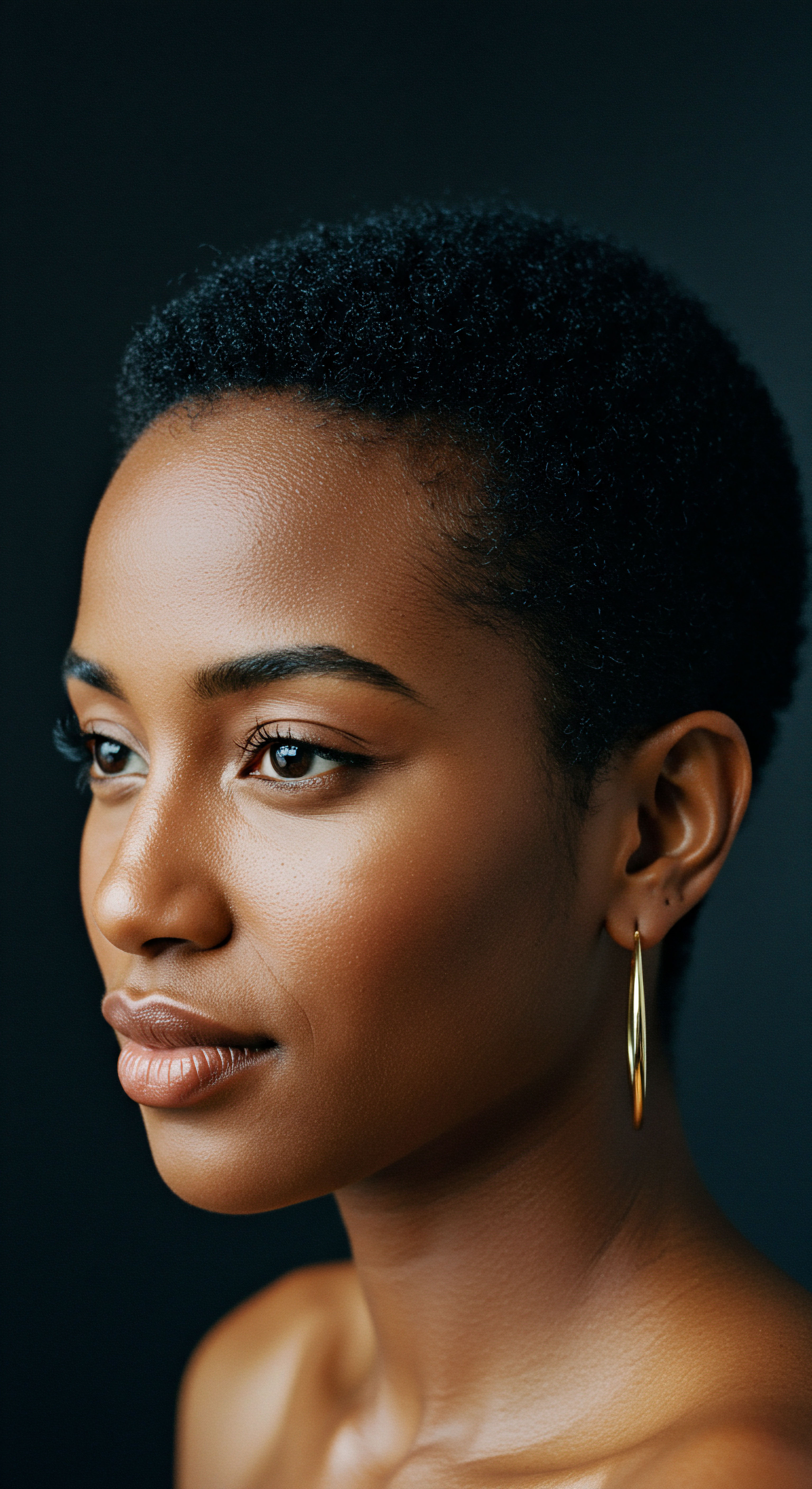
The Science of Hair Setting and Unsetting
The temporary changes in hair shape, whether from a braid-out, a twist-out, or simply a damp morning curl refresh, are direct consequences of the breaking and reforming of hydrogen bonds. When hair is wet, water molecules infiltrate the cortex, disrupting the hydrogen bonds that maintain the hair’s original shape. This allows the keratin chains to slide past one another, making the hair pliable.
As the hair dries in a new configuration, new hydrogen bonds form, stabilizing the hair in its desired style. This principle, known as Water Setting, is a cornerstone of textured hair styling.
The degree to which hair responds to water setting depends on several factors, including its porosity, its natural curl pattern, and any prior chemical treatments. Highly porous hair, often a characteristic of textured hair due to its raised cuticle scales, absorbs water more readily, allowing for quicker bond disruption and reformation. However, this also means it can lose moisture just as quickly, leading to styles that may not hold as long in humid environments.
Hair’s pliable nature when wet stems from water’s ability to disrupt internal hydrogen bonds, allowing for temporary reshaping as new bonds form upon drying.

Moisture’s Impact on Hair’s Feel and Form
The sensation of hair becoming softer and more pliable when wet is a direct result of water acting as a Plasticizer within the hair fiber. This means water molecules reduce the internal friction between protein chains, making the hair more flexible and less resistant to deformation. While this increased pliability is beneficial for styling, it also has implications for hair’s mechanical strength.
Consider the following mechanical changes observed in hair when wet ❉
- Reduced Tensile Strength ❉ Hair is generally weaker when wet, meaning it requires less force to break.
- Increased Elongation ❉ Wet hair can stretch further before breaking compared to dry hair.
- Lower Young’s Modulus ❉ This indicates reduced stiffness, making wet hair more elastic.
These changes highlight why gentle handling is paramount when hair is wet. Combing or brushing wet hair too vigorously can lead to increased breakage, as the weakened hydrogen bond network makes the hair more susceptible to external forces.

Styling and Maintaining Textured Hair with Moisture in Mind
Understanding the dynamic nature of hydrogen bonds in the presence of moisture is foundational to effective textured hair care. Many beloved styling techniques for coils, curls, and waves capitalize on this very principle.
| Technique Wash and Go |
| Moisture Level Applied Soaking wet |
| Hydrogen Bond Interaction Maximal bond disruption for natural curl definition upon drying. |
| Technique Twist Out / Braid Out |
| Moisture Level Applied Damp to wet |
| Hydrogen Bond Interaction Bonds reset in a new, elongated pattern as hair dries. |
| Technique Roller Set |
| Moisture Level Applied Wet |
| Hydrogen Bond Interaction Bonds reform around rollers, creating smooth, uniform curls. |
| Technique Steaming |
| Moisture Level Applied Low to moderate humidity |
| Hydrogen Bond Interaction Briefly reintroduces moisture, reactivating bonds for curl refresh. |
| Technique These methods rely on water to temporarily reshape the hair, allowing new hydrogen bonds to form. |
The concept of Moisture Balance becomes particularly relevant here. Too much moisture can lead to over-swelling and a loss of definition, while too little can result in stiff, brittle strands. The goal is to provide enough water to allow the hydrogen bonds to reset in a desired pattern, then to seal that moisture in with products that support the reformed bonds and protect against environmental humidity.
This often involves layering leave-in conditioners, oils, and styling creams. The sequence of product application, sometimes referred to as the LOC (Liquid, Oil, Cream) or LCO (Liquid, Cream, Oil) method, aims to create a barrier that slows down both water absorption and desorption, thereby helping to maintain the integrity of the hydrogen bond network and the resulting style.
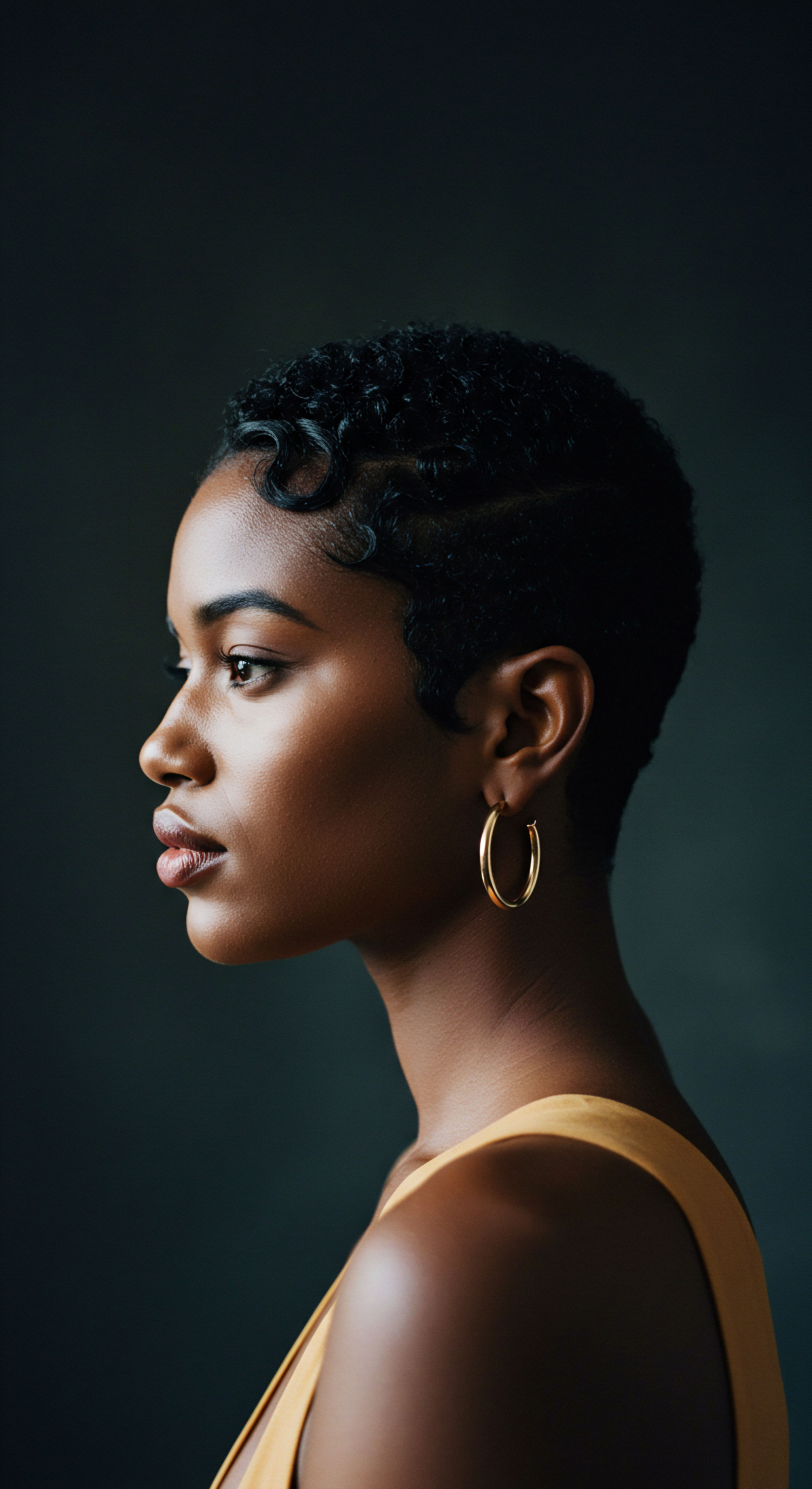
Relay
Beyond the immediate observations of hair’s response to water, there exists a deeper conversation, one that connects the molecular dance of hydrogen bonds to broader environmental realities and even cultural expressions. How do these fleeting molecular interactions, seemingly small in scope, reverberate through the daily experiences of those with textured hair, particularly in climates where moisture fluctuates wildly? Our conversation now shifts to a more sophisticated exploration, where science, cultural practice, and the intricate details of hair’s interaction with its surroundings converge, offering profound insight into the resilience and vulnerabilities of our coils and curls.

Anisotropic Swelling and Its Deeper Implications
When hair encounters moisture, its expansion is not uniform in all directions. This phenomenon, known as Anisotropic Swelling, means that hair fibers primarily increase in diameter rather than length. Research indicates that human hair fiber length increases approximately 2%, while its diameter can increase more than 15% when moving from 0% to 100% relative humidity.
This preferential radial expansion is attributed to the internal arrangement of keratin microfibrils within a softer, more hydrophilic matrix. The microfibrils, being stiffer, resist longitudinal swelling, effectively directing the water absorption outwards into the matrix.
This anisotropic behavior has profound implications for textured hair. The natural curvature of coils and curls means that this radial swelling can exert internal stresses. As the diameter of the fiber expands, the existing hydrogen bonds are disrupted, and new ones form. In a straight fiber, this expansion might be less disruptive to the overall form.
However, in a highly curved fiber, the radial expansion can exacerbate frizz by pushing individual strands further apart and altering the integrity of the curl pattern. This dynamic interplay between water absorption, swelling, and the inherent geometry of textured hair contributes significantly to the challenge of humidity management.

The Hysteresis of Hair Moisture
A less commonly discussed aspect of hair’s interaction with moisture is Hysteresis. This term refers to the phenomenon where the hair’s properties, including its moisture content and mechanical behavior, do not follow the exact same path when wetting and drying. For example, hair might hold onto a certain amount of moisture even after being exposed to drier conditions, or its mechanical properties might not fully revert to their original state after a complete wetting and drying cycle. This suggests that the breaking and reforming of hydrogen bonds is not always a perfectly reversible process, and subtle, lasting changes can occur within the hair’s internal structure over time with repeated moisture exposure.
A study on Tunisian women’s hair observed hysteresis in mechanical behavior, indicating that hair can absorb more energy during deformation in wet conditions without immediate damage, but also suggesting a less straightforward return to its initial state. This lingering effect could contribute to the cumulative impact of environmental factors on hair health and texture over time, subtly altering its responsiveness and feel. The continuous cycle of swelling and deswelling, even if temporary, can lead to a gradual shift in the hair’s overall disposition, making long-term moisture regulation a vital aspect of hair care.
Hair’s non-uniform expansion in moisture, known as anisotropic swelling, along with its tendency to retain subtle changes through hysteresis, shapes its unique response to humidity.
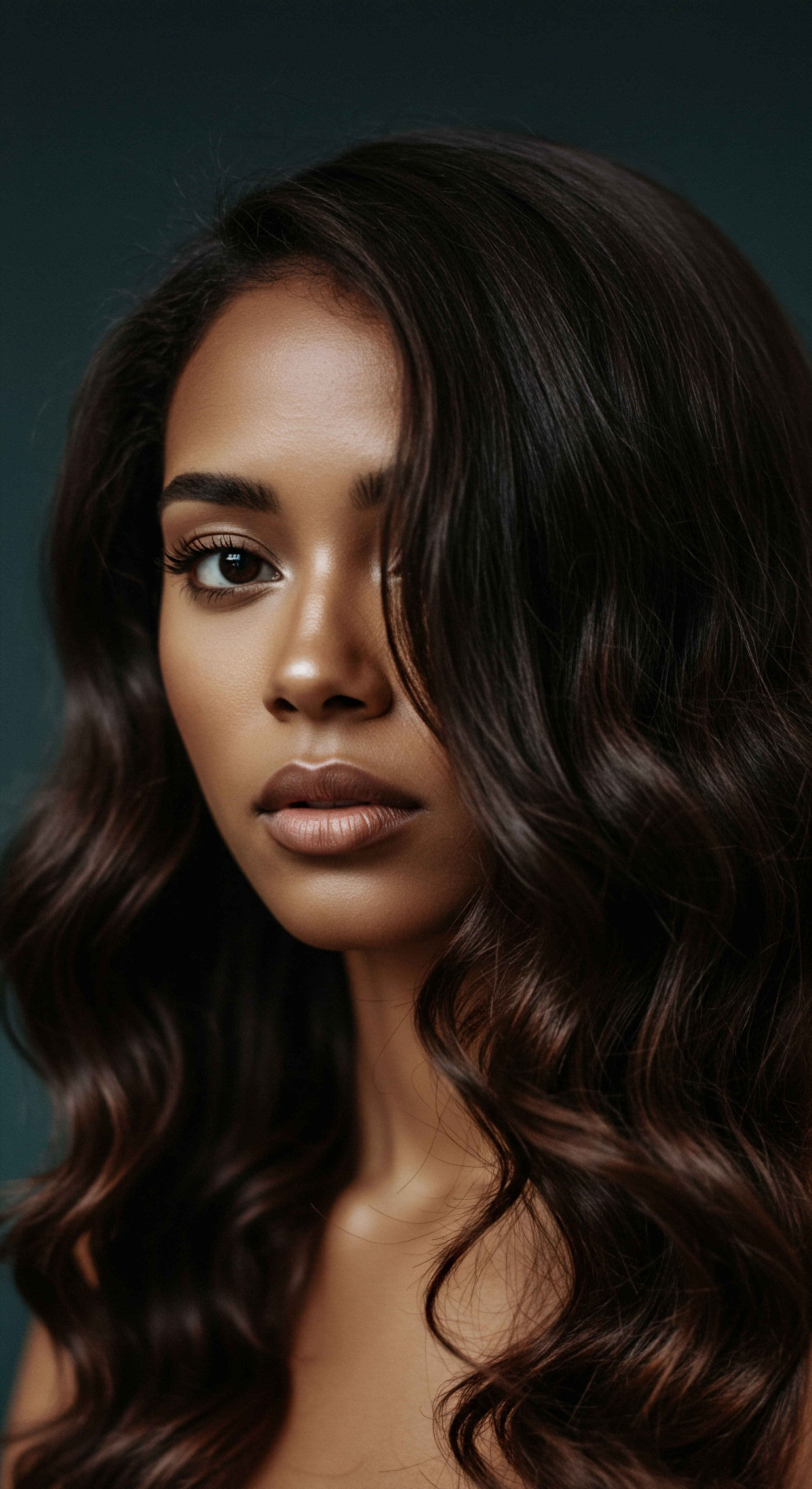
Chemical Alterations and Water’s Amplified Influence
The impact of moisture on hydrogen bonds becomes even more pronounced in hair that has undergone chemical treatments, such as bleaching, coloring, or relaxing. These processes often compromise the hair’s protective cuticle layer and can alter the internal protein structure, including some disulfide bonds. When the cuticle is lifted or damaged, the hair becomes more porous, allowing water molecules to enter the cortex more readily and in greater quantities.
A study revealed that bleached hair experienced a diameter variation more than double that of virgin hair when exposed to water. This amplified swelling suggests a significantly increased disruption of hydrogen bonds and a greater susceptibility to the effects of humidity. The presence of fewer intact disulfide bonds in chemically treated hair means that the hydrogen bond network plays an even more pronounced role in maintaining structural integrity.
When these bonds are rapidly formed and broken in a compromised fiber, it can lead to heightened frizz, increased tangling, and a sensation of dryness, even when the hair is absorbing water. The internal protein chains in damaged hair, already weakened, are less capable of reforming stable hydrogen bonds, contributing to a feeling of limpness or excessive softness that can be difficult to manage.
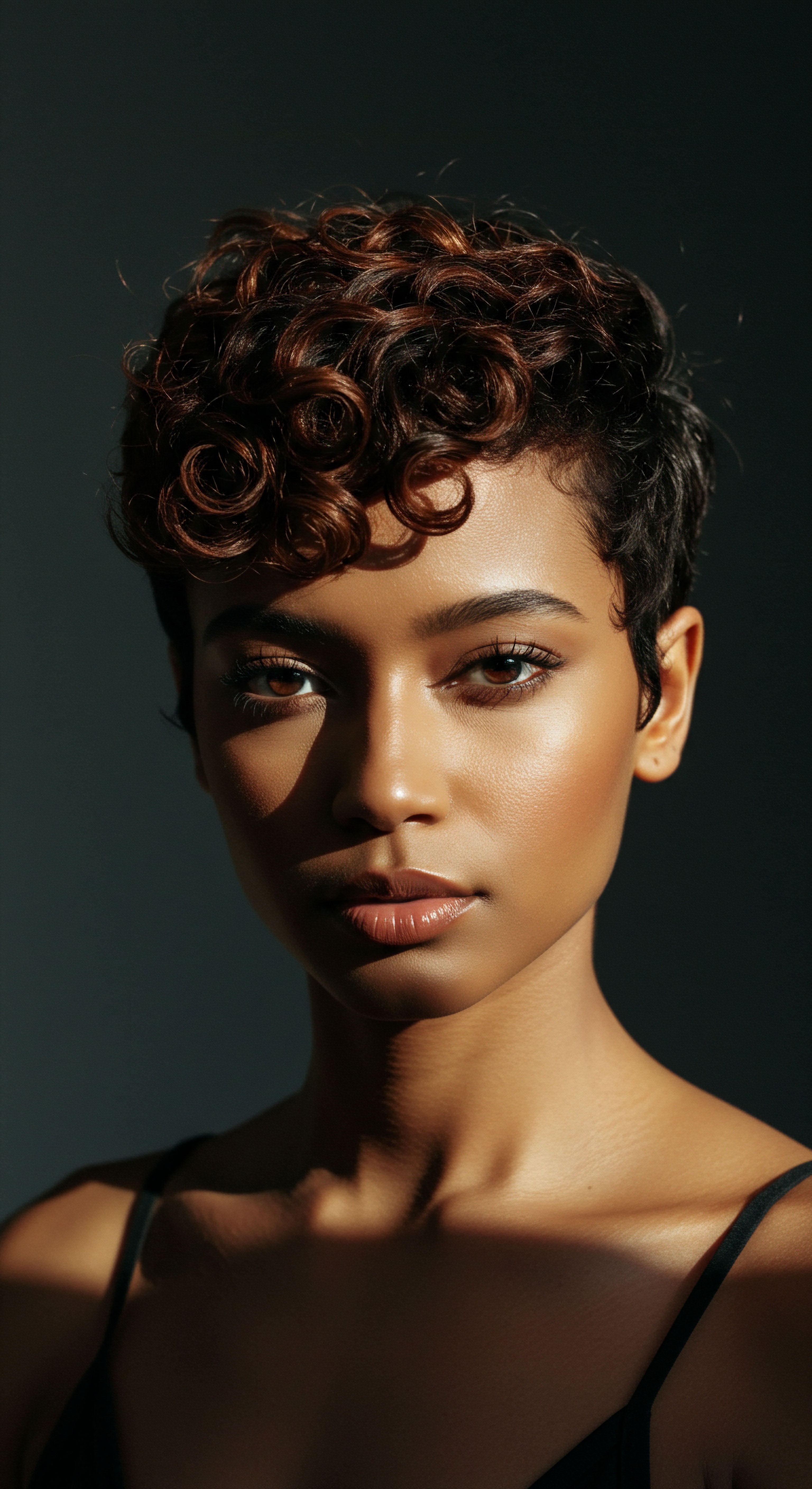
The Cultural Dance with Humidity
For generations, textured hair communities have developed sophisticated practices to harmonize with the dynamic interplay of hair and moisture. From ancestral knowledge passed down through families to modern styling techniques, these rituals often instinctively address the very principles of hydrogen bond behavior. Protective styles, for instance, serve not only as expressions of beauty but also as mechanisms to shield the hair from excessive environmental moisture or dryness, thereby minimizing the constant disruption and reformation of hydrogen bonds.
Consider the long-standing tradition of covering hair with scarves or wraps, particularly in humid climates. This practice, often rooted in cultural identity and aesthetic preference, also serves a practical purpose ❉ it creates a microclimate around the hair, helping to stabilize its moisture content and reduce the impact of sudden humidity shifts. This stabilization helps to preserve the hydrogen bond network, maintaining style definition and minimizing frizz.
The choice of materials, from silk to satin, further aids in this, as these fabrics are less absorbent and cause less friction than cotton, thereby protecting the delicate cuticle and supporting the hair’s moisture balance. These cultural practices, developed over centuries, are living examples of applied hair science, demonstrating an intuitive understanding of hair’s molecular responsiveness to its environment.
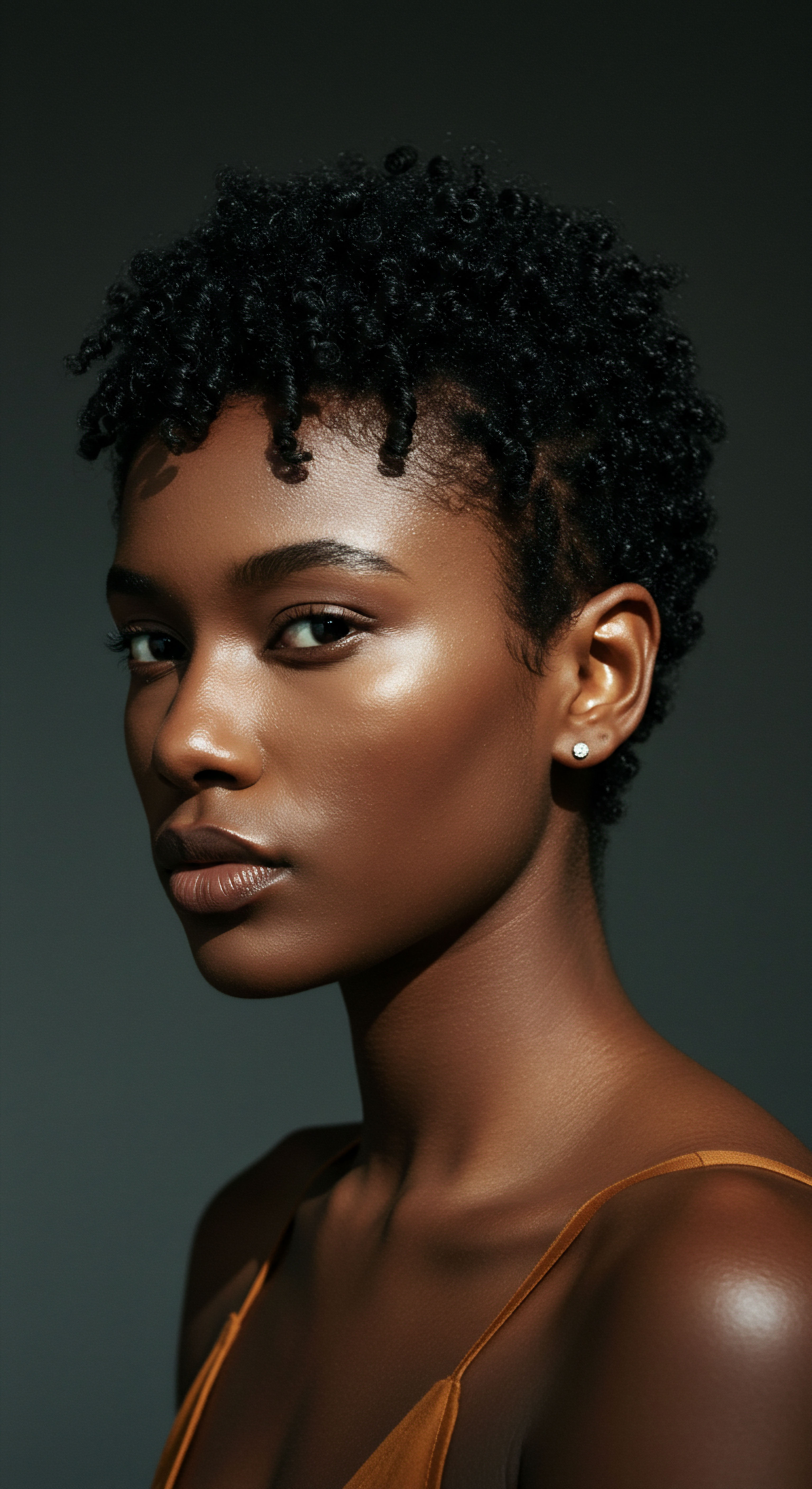
Reflection
Our journey through the molecular landscape of hair’s hydrogen bonds reveals a world far more dynamic and responsive than a casual glance might suggest. From the quiet dance of water molecules within the cortex to the profound implications for our styling rituals and cultural practices, the story of hair and moisture is one of constant transformation. It is a testament to the intricate balance that allows textured hair its remarkable versatility, its ability to shift and adapt, and its inherent beauty in every state. To truly care for our hair is to honor this delicate equilibrium, understanding that every drop of moisture, every gentle touch, contributes to its ongoing story.
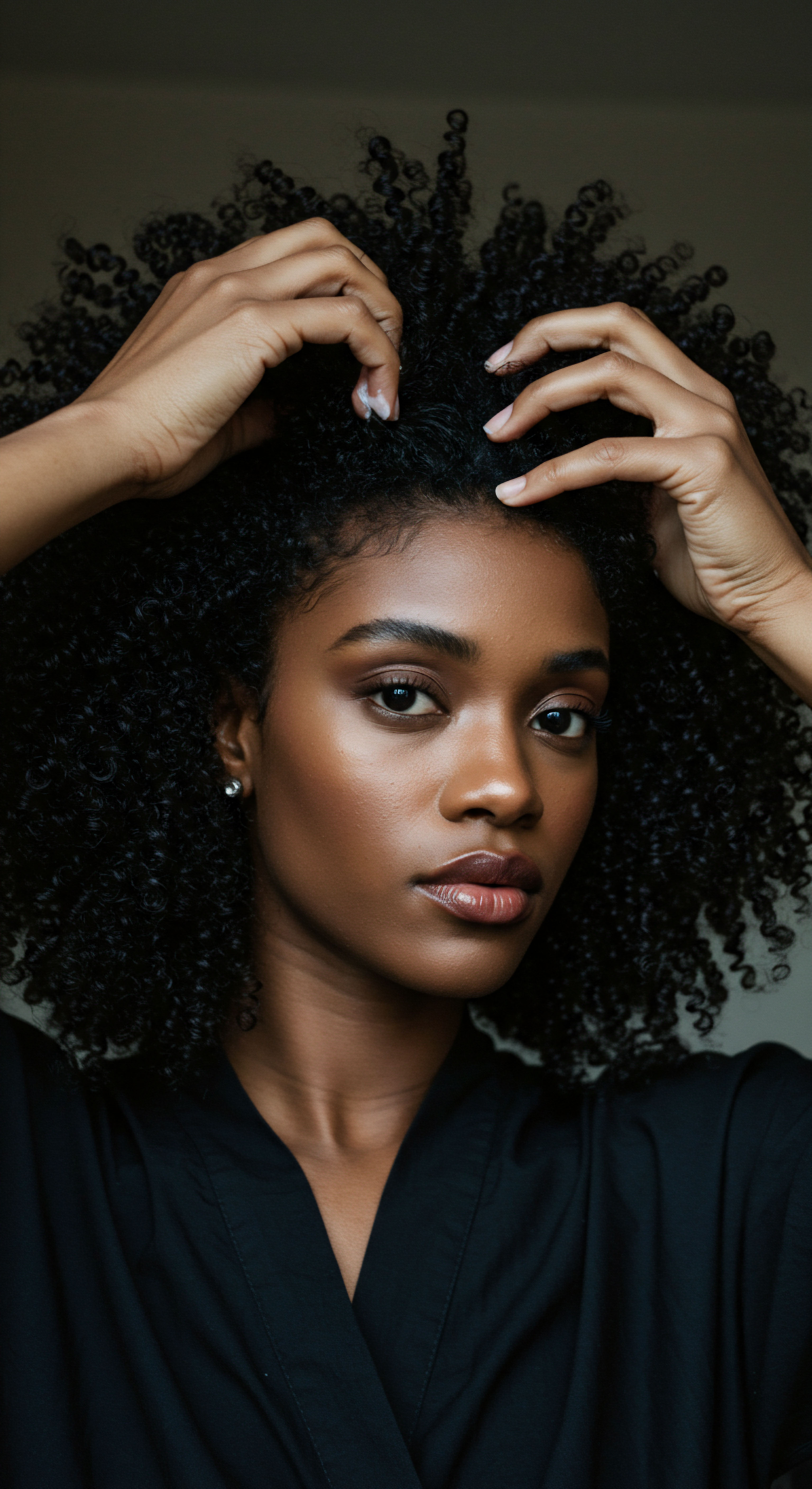
References
- Yang, Q. Effect of Temperature and Humidity on Mechanical Properties of Rabbit Hair Fibers. Advanced Materials Research, Volumes 573-574, 2012, pages 1230-1234.
- Hamdi, F. Msahli, S. Sakli, F. Mechanical and Hysteresis Behavior of Tunisian Women Hair at 65% Relative Humidity and at Wet Conditions. African Research Nexus, 2024.
- Mcmullen, R.L. Gillece, T. Schiess, T. Porosity and Resistance of Textured Hair ❉ Assessing Chemical and Physical Damage Under Consumer-Relevant Conditions. MDPI, 2021, 72, 711–731.
- Meyers, M. A. Chen, P. Y. Lopez, M. I. Seki, Y. & Lin, A. Y. Structure and mechanical behavior of human hair. Acta Biomaterialia, 2017, 48, 17-31.
- Robins, A. Human Hair and the Impact of Cosmetic Procedures ❉ A Review on Cleansing and Shape-Modulating Cosmetics. Cosmetics, 2020, 7(4), 78.
- Popescu, C. & Hoppel, M. The influence of humidity on the viscoelastic behaviour of human hair. Biorheology, 2003, 40(4), 431-439.
- Popescu, C. & Hoppel, M. The influence of humidity on the viscoelastic behaviour of human hair. ResearchGate, 2024.
- Hessefort, Y.Z. Holland, B.T. Cloud, R.W. True Porosity Measurement of Hair ❉ A New Way to Study Hair Damage Mechanisms. Journal of Cosmetic Science, 2008, 59, 303.
- Hosseini, A. et al. Anisotropic swelling due to hydration constrains anisotropic elasticity in biomaterial fibers. ResearchGate, 2022.
- Kelly, J. L. et al. The susceptibility of disulfide bonds to modification in keratin fibers undergoing tensile stress. Journal of Biological Chemistry, 2015, 290(20), 12695-12708.
- Al-Hassawi, Z. et al. Anisotropic swelling due to hydration in fibrous biomaterials. arXiv preprint arXiv:2312.08620, 2023.
- Li, Y. et al. Insight into the Keratin Ratio Effect of the Keratin/Cellulose Composite Fiber. ACS Applied Polymer Materials, 2023.
- Gottfried, V. et al. Keratin-water-NMF interaction as a three layer model in the human stratum corneum using in vivo confocal Raman microscopy. PLoS One, 2017, 12(11), e0188412.
- Fatumo, S. et al. The Genomic Variation in Textured Hair ❉ Implications in Developing a Holistic Hair Care Routine. Cosmetics, 2022, 9(6), 114.
- Marti, M. et al. Relevance and Evaluation of Hydrogen and Disulfide Bond Contribution to the Mechanics of Hard Alpha-Keratin Fibres. ResearchGate, 2017.
- Sargent, A. et al. Molecular interaction and partitioning in α-keratin using 1H NMR spin-lattice (T1) relaxation times. Journal of The Royal Society Interface, 2021, 18(185), 20210672.
- Robbins, C. R. Chemical and Physical Behavior of Human Hair. Springer, 2012.
- Hadley, N. F. & Quinlan, M. C. Hydrophilic Cuticle – The Basis for Water Vapour Absorption by the Desert Burrowing Cockroach, Arenivaga Investigata. The Journal of Experimental Biology, 1989, 142(1), 1-14.